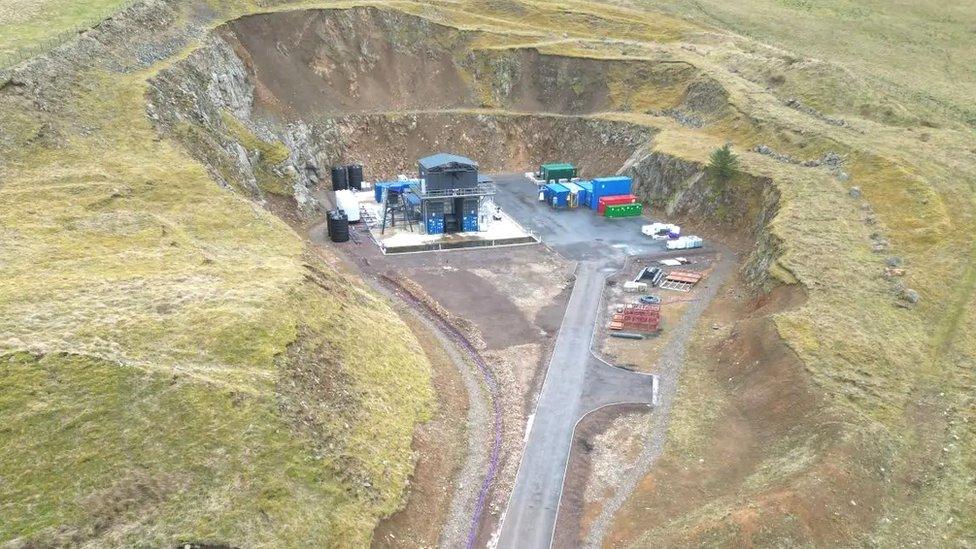Rocket firm Skyrora starts tests on 3D-printed engine
- Published

Skyrora is testing an updated engine design created by 3D printer
Rocket company Skyrora has started testing a new 3D-printed engine as it works towards its first commercial orbital launch.
The firm said it was carrying out "full duration" tests on an updated engine design at its Midlothian testing site.
The new model was 3D-printed by its Skyprint 2 machine, which Skyrora said halved production time and cut costs.
The Edinburgh-based company is planning orbital launches from Scotland, using its Skyrora XL vehicle.
These will take place from the SaxaVord Spaceport being developed in Shetland, subject to approval by the Civil Aviation Authority.
The new engine design features an improved engine cooling chamber, the company said.
The engine tests will each run for 250 seconds, the same amount of time involved in a real mission to reach orbit.
The trials at Skyrora's site at Gorebridge are due to take place up until the summer.

Skyrora is conducting the trials at its engine test site in Midlothian
Chief executive Volodymyr Levykin said: "The new models of 3D printed engines are bringing Skyrora closer towards efficient commercial orbital launch.
"The new engine technology developed by Skyrora's engineers and the commitment to a sustainable design are a testament to the innovation taking place in the UK space sector."
Skyrora has been working with the Civil Aviation Authority to progress its orbital launch vehicle licence application, which was submitted last year.
Last October, Skyrora's first attempt to get to space ended shortly after lift-off when its Skylark L booster ditched in the sea.
The company was aiming to get its vehicle above 100km (62 miles) in a flight from the Langanes peninsula in Iceland.
But a technical problem saw the 11m-long rocket fall back into waters no more than 500m from the launch pad.
The sub-orbital flight was intended as an early chance to test systems and procedures.
- Published13 October 2022
- Published18 August 2022
- Published15 July 2022